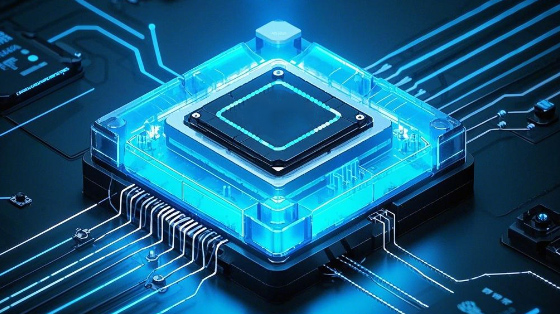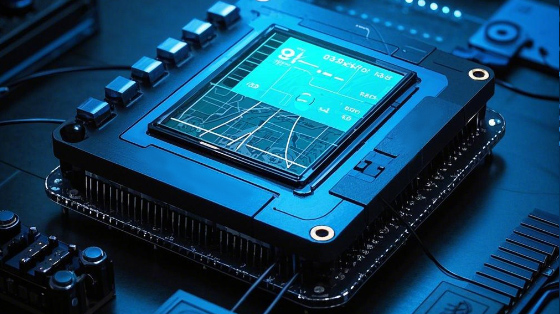Key "valves" and "switches" in the electronics world
1/15/2025 5:51:52 PM
In the large family of electronic components, diodes, transistors, and thyristors are like delicate "valves" and "switches" that control the path and flow of electronic flow, and are the core elements for building various electronic circuits and systems. From mobile phones and TVs in daily life, to automation equipment and power transmission systems in industrial production, to aerospace and new energy development in the field of cutting-edge technology, they all play an irreplaceable key role, continuously promoting the progress and innovation of electronic technology, and profoundly affecting the development process of modern society.
A diode, as one of the simplest and most basic semiconductor devices, has the remarkable property of unidirectional conductivity. It consists of a PN junction. When a forward voltage is applied to the anode of the diode and the voltage value exceeds its conduction threshold, the PN junction is in a forward bias state, allowing current to pass through the diode smoothly. When a reverse voltage is applied, the PN junction is in a reverse bias, and only a small reverse saturation current flows through, approximating the off state. It is this unique unidirectional conductivity that makes diodes widely used in electronic circuits.
In a power supply circuit, a rectifier diode is an indispensable key component. For example, in a common bridge rectifier circuit, four diodes are cleverly combined to convert the sinusoidal alternating current input from the AC power supply into pulsating direct current. When the AC voltage is in the positive half cycle, one set of diodes is turned on, and the current flows in a specific direction; while in the negative half cycle, the other set of diodes is turned on, and the current direction is reversed, so that a unidirectional pulsating DC voltage is obtained at both ends of the load. This rectifier function lays the foundation for many electronic devices that require DC power supply, such as computer power supplies and chargers. In addition to rectification, diodes can also be used for voltage regulation. The voltage regulator diode makes use of its reverse breakdown characteristics. After the reverse voltage reaches a certain value, although the current varies in a wide range, the voltage at both ends remains basically constant. By reasonably designing the circuit, the voltage regulator diode can be combined with resistors and other components to provide a stable reference voltage for precision electronic circuits, ensuring that the circuit can still work normally when the power supply voltage fluctuates. For example, it is used in some high-precision measuring instruments and communication equipment. In addition, diodes also play an important role in signal detection and processing. For example, detector diodes can detect low-frequency signals from high-frequency signals that have been modulated, and are used in radio reception equipment such as radios and televisions to extract audio or video signals and realize the demodulation process of the signal, allowing us to listen to clear broadcast sounds and watch high-quality TV pictures.
Transistors, including bipolar junction transistors (BJTs) and field-effect transistors (FETs), are semiconductor devices with amplification and switching functions, and their invention can be called an important milestone in the history of electronic technology. Bipolar junction transistors adjust the current between the collector and the emitter by controlling the base current, so as to achieve signal amplification. In an audio amplifier, a weak audio signal is input to the base of the transistor, which is amplified by the transistor. The amplified audio signal is output at the collector, which is enough to drive the speaker to emit a loud sound. This amplification function is crucial in many electronic devices, such as audio systems, walkie-talkies, radio transmitters, etc., which can effectively enhance the power and amplitude of signals and meet the requirements of signal transmission and processing in different scenarios. Field-effect transistors use electric field effects to control current, which has the advantages of high input impedance, low noise, and low power consumption. In digital circuits, transistors act as switching elements to quickly switch between on and off states, realizing the logic operation and storage of binary signals. For example, in the computer's Central Processor (CPU), memory chips, and various digital logic circuits, hundreds of millions of transistors work together to process and store data according to pre-designed logic rules, enabling the computer to run various complex programs and tasks at high speed and accuracy, from simple word processing to complex image rendering to scientific computing. In addition, transistors are also widely used in power control, such as in the fields of motor speed regulation and power management. By adjusting the conduction degree of transistors, power output can be controlled to achieve accurate control of motor speed and stable regulation of power supply voltage and current, thus improving energy efficiency and reliability of equipment operation.
A thyristor, also known as a thyristor rectifier (SCR), is a high-power semiconductor device with a four-layer PNPN structure. Its main feature is that it can control the conduction angle by controlling the pole signal, so as to realize the controllable rectification and switching control of high-power AC circuits. In the field of industrial power control, thyristors play an extremely important role. For example, in a motor speed control system, thyristors can be used as AC voltage regulation components to adjust the effective value of the AC voltage applied to the motor by changing the phase of the trigger pulse, thereby achieving smooth adjustment of the motor speed. This speed regulation method has the advantages of high efficiency and simple control, and is widely used in various motor drive equipment in industrial production, such as machine tools, fans, and water pumps. It can flexibly adjust the motor speed according to actual production needs to achieve the purpose of energy conservation and efficiency. In power transmission and distribution systems, thyristors are used in high-voltage direct current transmission (HVDC) technology. By converting alternating current into direct current for long-distance transmission, and then converting direct current back to alternating current at the receiving end, it can effectively reduce the energy loss in the transmission process. Thyristors perform the key tasks of rectification and inverter, enabling efficient conversion and transmission of high-power electrical energy, improving the stability and transmission capacity of the power system, and providing a reliable solution for long-distance and large-capacity power transmission. In addition, thyristors are also widely used in lighting control, welding machines, and other fields. For example, in some intelligent lighting systems, thyristors can adjust the brightness of the light according to the ambient light intensity and user settings to achieve energy-saving lighting. In welding machines, thyristors are used to control the size and waveform of welding current to ensure welding quality and stability.
With the continuous advancement of science and technology, diodes, transistors, and thyristors are also continuously innovating and developing. In the field of materials science, the research and application of new semiconductor materials have brought significant performance improvements to these devices. For example, wide-bandgap semiconductor materials such as silicon carbide (SiC) and gallium nitride (GaN) have gradually emerged. Compared with traditional silicon materials, wide-bandgap semiconductor materials have higher breakdown electric field strength, higher electron saturation drift speed, and better thermal conductivity. Diodes, transistors, and thyristors made of these materials can withstand higher voltages, currents, and temperatures, and have lower on-resistance and switching losses, making them particularly suitable for high-temperature, high-voltage, and high-power application scenarios. In the fields of motor drive systems for new energy vehicles, inverters for solar photovoltaic power generation systems, and electric traction systems for high-speed trains, the application of wide bandgap semiconductor devices can significantly improve the efficiency, reliability, and power density of the system, promoting the development of these fields towards higher performance, more energy conservation, and environmental protection.
In terms of manufacturing processes, the continuous evolution of micro-nano processing technology has made the size of diodes, transistors, and thyristors continue to shrink, and the degree of integration has been greatly improved. For example, modern integrated circuit manufacturing processes have been able to integrate hundreds of millions of transistors on a tiny chip, and the feature size of the chip has been continuously reduced, gradually moving from the micron level to the nano level. This high degree of integration not only reduces the size and weight of electronic devices, but also reduces costs, and also improves the performance and reliability of circuits. At the same time, advanced packaging technologies are also evolving, such as three-dimensional packaging\ system-in-package (SiP), etc., which can integrate multiple diodes, transistors, thyristors and other electronic components with different functions in a package module to achieve more complex functions and higher system performance. For example, in some smart phone chips, a variety of functional units such as CPU\ GPU\ memory\ communication modules are integrated, in which a large number of transistors and diodes work together, through advanced packaging technology implementation The perfect combination of high performance\ low power consumption and small size provides users with powerful functions and convenient experience.
In addition, in the field of emerging technologies such as the Internet of Things, artificial intelligence, and 5G communication, diodes, transistors, and thyristors also face new opportunities and challenges. In Internet of Things devices, due to the need for low power consumption, small size, and high reliability electronic components, higher requirements are placed on the power optimization and miniaturization of diodes, transistors, and thyristors. For example, in wireless sensor nodes, low-power transistors and diodes are required to build sensor circuits and wireless communication modules to extend battery life and ensure long-term stable operation of devices. In the field of artificial intelligence, with the development of deep learning algorithms, the demand for computing power is increasing exponentially, which requires transistors to achieve higher computing speed and greater integration at lower power consumption to meet the needs of artificial intelligence chips for massive data processing. In 5G communication systems, the characteristics of high frequency band, large bandwidth, and high speed pose higher performance challenges to RF front-end devices such as diodes and transistors, requiring them to have higher cutoff frequencies, faster switching speeds, and better linearity to achieve efficient signal transmission and reception, and promote the wide application and further development of 5G communication technology.
In summary, diodes, transistors, and thyristors, as key "valves" and "switches" in the electronic world, play a pivotal role and are widely used in various fields of electronic technology. Their continuous innovation and development not only provide a strong driving force for the upgrading of the traditional electronics industry, but also lay a solid foundation for the breakthrough and rise of emerging technologies, leading us towards a more intelligent, convenient, and efficient technological future.
Related information
Contact Us
Get more product information!





